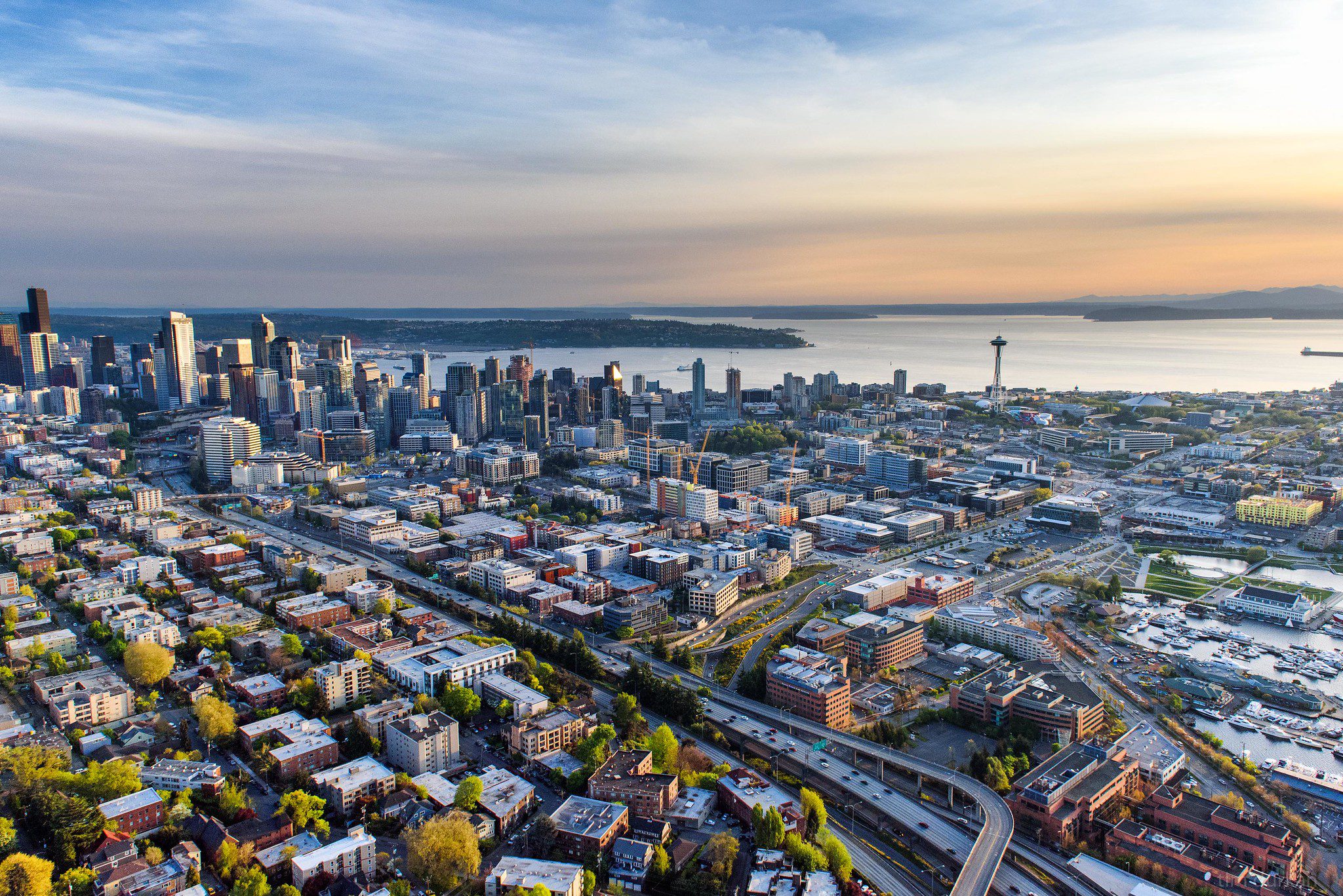 Aerial view of the city of Seattle, looking southwest. Photo credit: Tim Durkan
Aerial view of the city of Seattle, looking southwest. Photo credit: Tim Durkan Summary:
- Today, Mayor Harrell signed the 2023-2024 City of Seattle Adopted Budget, passed by the Seattle City Council last week.
- Most transportation investments outlined in the 2023-2024 Proposed Budget remain in the final budget, which invests millions of dollars in safer streets, traffic-calming infrastructure, sidewalks, and major bridge repair projects, despite a projected revenue shortfall.
- There are some transportation-related amendments to the proposed budget responding to pressing needs and the revenue shortfall, which are outlined in this blog post.
Most transportation investments outlined in the 2023-2024 Proposed Budget remained in the adopted budget. Here are some important things you’ll see in the 2023-2024 Adopted Budget.
Prioritizing safety for people walking, rolling, and biking. This budget:
- Expands the school zone camera program to improve safety and provide increased funding for equitable investment in school safety projects. Driving at or below 20 MPH gives people driving and children walking more time to see each other and react. Our goal is to improve safety for everyone, and these traffic cameras help to enforce the 20 MPH school zone speed limits around Seattle schools. Beginning in 2024, this is expected to provide an additional $1 million annually of funding to the School Safety program.
- Increases the vehicle license fees (VLF) by $10, for $50 annually. Revenues from the current $40 fee are spent on maintaining and preserving our existing transportation system, safe streets, sidewalks, bike lanes, strong bridges, and more. This extra $10 will help invest even more in bridge maintenance and Vision Zero projects over the next two years.
- Invests more in collision-prone by restricting $1 million to be used to replace plastic bollards with concrete barriers on currently protected bike lanes in Council District 2, an area with over half of the city’s fatal crashes in 2021.
Responding responsibly to a revenue shortfall. This budget:
- Responds to the anticipated decrease in Real Estate Excise Tax (REET) revenue, a major source of transportation funding. Our sidewalk safety repair program continues to exceed annual goals. We have repaired the equivalent of over 180 blocks of Seattle’s sidewalks since the beginning of the Levy to Move Seattle in 2016. We have completed thousands of sidewalk spot improvements to make sidewalks safer and more accessible for people walking and rolling.
- We identified this program as one from which to redirect some funding to support other critical priorities temporarily. We expect the funding to return after 2024 and anticipate maintaining our current sidewalk safety repair program service levels over the next two years.
Investing in community priorities. This budget:
- Requests collaboration between City departments to complete the street frontage improvements on Thomas Street, redesigning an important east-west green street and public connection that links the Cascade neighborhood through South Lake Union to the Seattle Center.
- Supports community engagement, planning, and visioning efforts to transform rights-of-way into vibrant public spaces across the city. (More on that below!)
You can make your voice heard in planning future investments in Seattle transportation.
Through the Seattle Transportation Plan (STP), we are reimagining how we move around the city and enjoy our streets and public spaces. You can help develop the STP with us by sharing your input on the Online Engagement Hub.
Learn more about the STP and share your ideas:
- Sign up for Seattle Transportation Plan email updates
- Visit our multi-language website
- Call our multi-language phone line: (206) 257-2114
- Send us an email in your preferred language at STP@seattle.gov